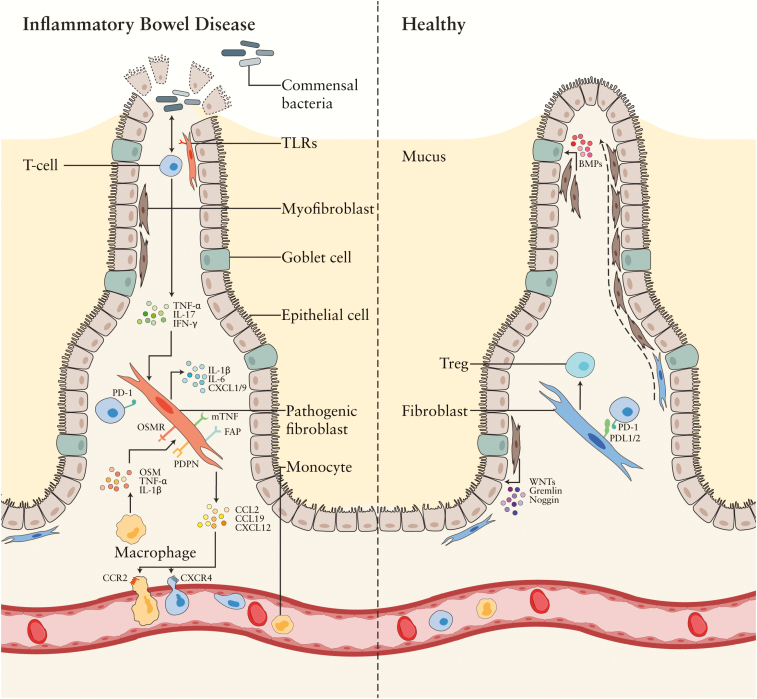Figure 1.
Stromal cells in the intestine of IBD patients versus healthy individuals. Different stromal subsets are present in the inflamed bowel. Diminished migration capacity in fibroblasts and less stromal cells [green] supporting epithelial cells are found in IBD. Stromal cells directly [via TLRs] and indirectly [via microbiota-reactive memory T cells] respond to microbiota by the production of several pro-inflammatory factors. Pathogenic fibroblasts [pink] show expression of PDPN, OSMR, mTNF, and FAP, while they produce among others IL-6, IL-13, TNFSF14, and IL-1β. Through for example CCL2 and CXCL12, they recruit, respectively, monocytes and T cells towards the inflamed tissue.
Treg – regulatory T cell, PD-L – programmed death-ligand, PDPN – podoplanin, OSMR – oncostatin M receptor, FAP – fibroblast activation protein, IFN-y – interferon gamma, CXCL – C-X-C motif chemokine, IL-– interleukin, TNFSF-14 – tumor necrosis factor superfamily 14, mTNF – membrane-bound tumor necrosis factor, CCL – chemokine ligand, BMP – bone morphogenetic protein. Some of the figure components are derived from the Servier Medical Art library.

